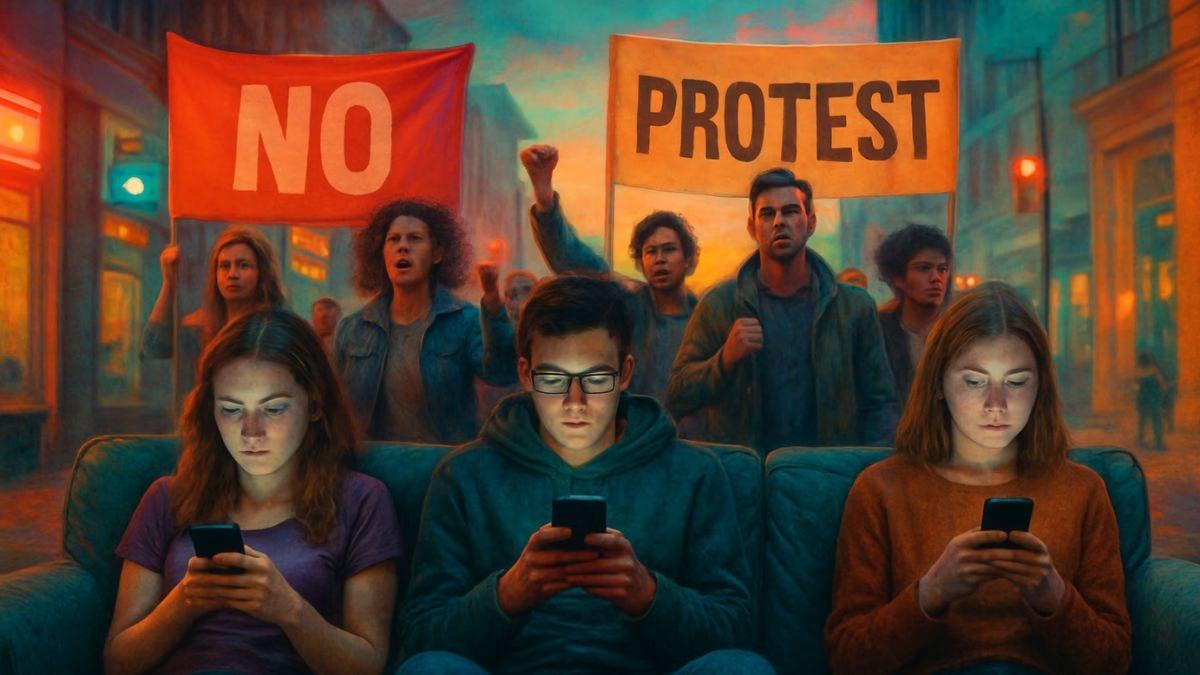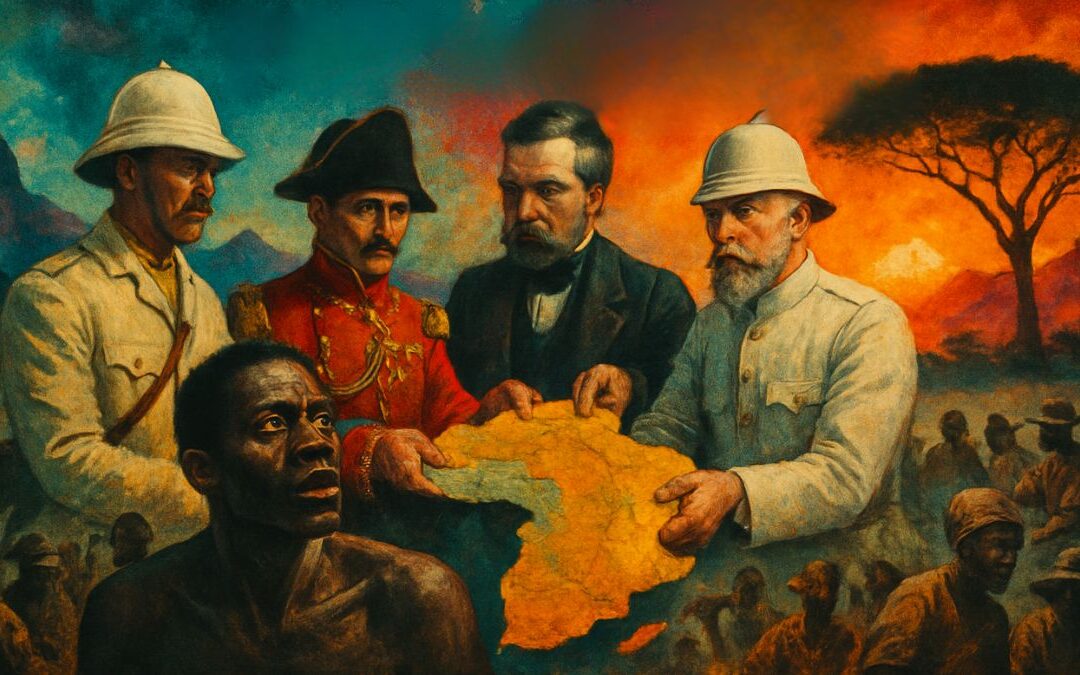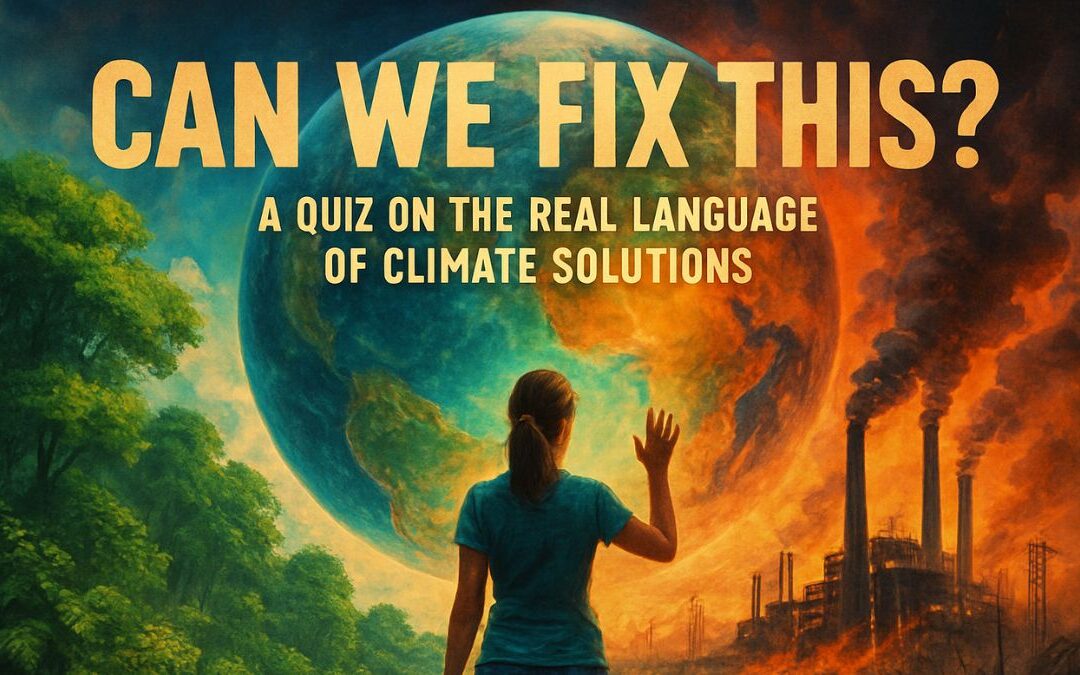Audio Article
In the summer of 2020, millions of screens went dark. Not from a power outage, but from a deliberate, coordinated act of digital protest. Black squares, stark and silent, flooded Instagram feeds under the hashtag #BlackoutTuesday. It was a gesture of solidarity with the Black Lives Matter movement, a moment of collective pause intended to amplify Black voices in the wake of George Floyd’s murder. For a day, the usual cacophony of brunch photos, vacation throwbacks, and influencer spon-con was replaced by a monolithic wall of black. It was visually arresting, undeniably widespread, and… complicated.
Was it a potent symbol of unity that forced a global conversation? Or was it a perfunctory, low-effort gesture that drowned out crucial information from on-the-ground organizers under its own hashtag? The answer, uncomfortably, is yes to both. And in that dual reality lies the central, throbbing question of our time: Is social media activism truly effective?
We are living in the age of the digital town square, a sprawling, chaotic, and relentlessly immediate public forum where revolutions can be live-tweeted and petitions can garner millions of signatures before breakfast. It has, without question, rewired the mechanics of social change. But as we navigate this brave new world of hashtags and retweets, we must grapple with a difficult dichotomy: Is the digital picket line a powerful new frontier for justice, or is it a comfortable cul-de-sac of self-congratulation, a place where the feeling of doing something has replaced the hard work of actually doing something?
The Megaphone Effect: Democratizing the Voice of Dissent
Before we delve into the critiques, let’s give credit where it’s unequivocally due. The single greatest triumph of social media activism is its power to democratize dissent. For centuries, the narrative of public discourse was controlled by a select few: newspaper barons, television network executives, and political gatekeepers. If you had a grievance, your primary recourse was to stand on a street corner with a sign, hoping a camera crew might show up.
Social media blew the hinges off those gates. Suddenly, a teenager in her bedroom with a smartphone could document injustice and broadcast it to the world. A marginalized community, long ignored by mainstream media, could organize, share their stories, and build a movement from the ground up. This is the “megaphone effect.” Social media hands a potential megaphone to anyone with a connection, amplifying voices that would have otherwise been whispers in the wind.
The Arab Spring in the early 2010s remains a seminal, if complex, example. In countries like Tunisia and Egypt, nascent pro-democracy movements used platforms like Facebook and Twitter to organize protests, share information past the watchful eyes of state censors, and show the world the brutal reality of authoritarian crackdowns. It wasn’t that social media caused the revolutions—decades of simmering discontent did that—but it was the accelerant. It was the nervous system of the resistance, allowing for a level of coordination and speed that was previously unimaginable.
More recently, movements like #MeToo and #BlackLivesMatter have shown the sustained power of this digital amplification. #MeToo didn’t invent the concept of sexual harassment; it shattered the isolation that victims felt. As millions of women shared their stories, the hashtag became a roaring testament to the scale of the problem, forcing institutions from Hollywood to Capitol Hill to confront a reality they had long ignored. It made the invisible, visible. That is a power that cannot be understated.
The Perils of the Armchair Activist: Welcome to Slacktivism
And yet, for every story of a movement galvanized online, there is the creeping shadow of “slacktivism.” The term, a portmanteau of “slacker” and “activism,” describes low-effort, low-cost digital actions that make the participant feel good but have little to no real-world impact. It’s changing your profile picture frame to support a cause. It’s signing an online petition that goes nowhere. It’s angrily retweeting a politician you dislike. It’s the digital equivalent of honking your horn in a traffic jam—it feels like you’re doing something, but you’re still not moving.
The danger of slacktivism is insidious. It operates on the principle of what psychologists call “moral licensing.” The idea is that by performing a simple, virtuous act (like posting a black square), we give ourselves unconscious permission to not engage in more meaningful, difficult actions later on. We’ve checked the “good person” box for the day, so we don’t feel the need to donate to a bail fund, volunteer for a local organization, show up to a city council meeting, or have a difficult conversation with a relative who holds prejudiced views.
This creates a culture of performative activism, where the appearance of supporting a cause becomes more important than the substantive work of advancing it. The focus shifts from collective liberation to individual branding. “Look at me, I’m one of the good ones.” The algorithm rewards this, of course. A heartfelt, nuanced essay on systemic injustice will get a fraction of the engagement of a simple, aesthetically pleasing infographic with a bold font. The platforms themselves are engineered for ephemeral, high-emotion, low-context sharing. They are not, by their nature, conducive to the slow, boring, and often unglamorous work of building lasting change.
The Double-Edged Sword of Information
One of the most potent aspects of social media activism is the speed at which information can travel. A video of police brutality can go viral in hours, forcing accountability before an official narrative can be spun. Emergency relief information can be disseminated instantly during a natural disaster. This velocity can be a powerful tool for truth.
But that sword cuts both ways. The same channels that carry vital information are also perfect conduits for misinformation, disinformation, and propaganda. They are fertile ground for conspiracy theories and rage-bait. The very algorithms designed to keep us engaged by showing us what we want to see create potent echo chambers and filter bubbles.
An echo chamber is a digital environment where you primarily encounter beliefs and opinions that coincide with your own. Dissenting views are filtered out, not by some nefarious censor, but by the platform’s own logic. If you constantly engage with content from one political perspective, the platform will diligently serve you more of the same, reinforcing your existing beliefs. Over time, this can lead to a dangerously skewed perception of reality. We lose our ability to understand, or even tolerate, opposing viewpoints because we are no longer exposed to them. The “other side” becomes a caricature, a monstrous and irrational entity, rather than a group of people with different experiences and priorities.
This polarization is antithetical to the hard work of democracy, which requires compromise, empathy, and a shared understanding of facts. When we are all operating from within our own bespoke, algorithmically-curated realities, finding common ground becomes nearly impossible. Activist movements can become more about tribal purity tests than about building broad, effective coalitions.
From Clicks to Bricks: The Path to Real-World Impact
So, where does this leave us? Is it all just a hopeless cycle of performative outrage and algorithmic division? Not necessarily. The most effective social media activism understands a fundamental truth: the digital world is a starting point, not a destination. Its ultimate purpose is to serve as a bridge to the physical world. Clicks must eventually lead to bricks—the bricks of a community center, the bricks of a legislature, the bricks of a picket line.
Successful digital movements use online tools for what they’re best at:
- Raising Awareness and Education: Distilling complex issues into accessible formats to bring new people into the fold. This is the top of the funnel.
- Mobilization: Using the network to organize real-world events. Social media is an unparalleled logistical tool for getting bodies into the streets, to the polls, or to a town hall meeting. The 2017 Women’s March, one of the largest single-day protests in U.S. history, was largely coordinated via Facebook.
- Targeted Pressure: Focusing collective attention on a specific person, corporation, or institution to demand accountability. A well-organized hashtag campaign that floods a company’s mentions can be more damaging to its brand than a dozen people protesting outside its headquarters.
The key is intentionality. The goal isn’t just to “go viral”; it’s to leverage that virality into tangible outcomes. It requires leaders and organizations who can effectively channel the raw, ephemeral energy of an online moment into the sustained, structured work of a long-term movement. It means providing clear, actionable steps that go beyond a simple “like” or “share.” It means asking people for their time, their money, their skills, and their physical presence.
The Future of Activism: Navigating the Noise
Social media activism is not a monolith. It is a messy, evolving, and contradictory space. It has given a voice to the voiceless and has been instrumental in igniting some of the most important social movements of the 21st century. It has also created a swamp of performative nonsense, deepened political polarization, and become a powerful tool for those who wish to spread lies and division.
To dismiss it entirely is to ignore a potent tool for change. To embrace it uncritically is to risk confusing noise with progress. The future of effective activism lies in a hybrid model—one that harnesses the unparalleled reach and speed of digital networks while remaining grounded in the time-tested principles of community organizing. It requires us to be more critical consumers and creators of online content. We must ask ourselves the hard questions before we hit “share.” Is this informative? Is it true? Does it offer a path to meaningful action, or does it just offer the fleeting satisfaction of a righteous click?
Ultimately, a hashtag is not a movement. A profile picture is not a protest. They are symbols, and symbols are only as powerful as the conviction and action that stand behind them. The digital world has built us a bigger, louder, and more accessible picket line than ever before. The challenge, for all of us, is to have the courage to step off it and into the world it purports to want to change.
MagTalk Discussion
Focus on Language
Vocabulary and Speaking
Let’s dive into some of the language I used in that article. Words are the building blocks of argument and persuasion, and choosing the right one can make all the difference between a fuzzy idea and a sharp, compelling point. We’ll go through ten key words and phrases. My goal is for you to not just understand what they mean, but to get a feel for them, so you can start using them to make your own English sound more precise and sophisticated. Think of it less like a vocabulary test and more like adding new colors to your palette. First up is the word cacophony. I described the usual Instagram feed as a “cacophony of brunch photos, vacation throwbacks, and influencer spon-con.” A cacophony is a harsh, discordant mixture of sounds. Imagine ten different songs playing at once, or the sound of a busy city street with car horns, sirens, and construction noise all competing for your attention. It’s an unpleasant, chaotic noise. We use it metaphorically to describe any situation that feels like a chaotic, overwhelming mess of conflicting elements. You could say, “The political debate descended into a cacophony of insults and interruptions.” Or, when you’re overwhelmed with information online, you might feel like you’re lost in a “cacophony of opinions.” It’s a wonderful word to describe a sensory or informational overload that is not harmonious.
Next, we have perfunctory. I called the posting of a black square a potentially “perfunctory, low-effort gesture.” When an action is perfunctory, it’s carried out with a minimum of effort or reflection. It’s something you do because you have to, or feel you’re supposed to, not because you genuinely care about it. Think of a bored cashier mumbling “have a nice day” without making eye contact. That’s a perfunctory remark. Or a student who skims a chapter just to say they’ve done the reading. That’s perfunctory studying. In the context of activism, a perfunctory action is one that’s done for show, ticking a box without any real engagement. You could say, “He gave a perfunctory apology that nobody found sincere,” or “The safety inspection was clearly perfunctory; they missed several obvious problems.” It’s the perfect word for actions that are merely going through the motions.
Let’s look at the word dichotomy. I said we must “grapple with a difficult dichotomy.” A dichotomy is a division or contrast between two things that are or are represented as being opposed or entirely different. It’s about seeing a situation in terms of two distinct, often conflicting, parts. For example, there’s the classic dichotomy between good and evil, or reason and emotion. In the article, the dichotomy is between social media as a powerful tool for justice and social media as a place for self-congratulatory slacktivism. It frames the issue as a choice between two opposing realities. You might talk about “the dichotomy between one’s public persona and private self,” or “the false dichotomy the politician created between protecting the environment and growing the economy.” It’s a great word for setting up the central conflict of an argument.
Then we have unequivocally. I stated that credit is “unequivocally due” to social media for democratizing dissent. When you say something unequivocally, you are saying it in a way that leaves no doubt. It is clear, absolute, and unambiguous. There’s no “maybe” or “sort of.” It’s a very strong and confident adverb. You could say, “The evidence shows, unequivocally, that the defendant was guilty.” Or, “She stated unequivocally that she would not be running for re-election.” It’s a power word you use when you want to express complete certainty and conviction.
A more delicate word we used is nascent. I referred to the “nascent pro-democracy movements” of the Arab Spring. Nascent means just coming into existence and beginning to display signs of future potential. It describes something that is in its very early stages of development. Think of a tiny seedling just breaking through the soil. That’s a nascent plant. A startup company with a great idea but only three employees is a nascent business. It implies something is new, budding, and full of promise. You could talk about “the nascent stages of a new technology” or “a writer’s nascent talent, visible even in their early work.” It captures that exciting, fragile beginning phase of something.
Next up is the verb galvanize. I wrote about how a story of injustice can “galvanize” a movement. To galvanize means to shock or excite someone into taking action. The word actually comes from the scientist Luigi Galvani, who discovered that electricity could make a dead frog’s legs twitch. So, the word has this built-in sense of jolting something into life. A passionate speech can galvanize a crowd. A tragic event can galvanize a community to demand change. It’s a much more dynamic verb than simply “motivate” or “encourage.” It implies a sudden, powerful surge of energy and action. For example, “The company’s terrible quarterly report galvanized the board of directors into firing the CEO.”
Let’s talk about the word insidious. I described the danger of slacktivism as “insidious.” Something that is insidious proceeds in a gradual, subtle way, but with harmful effects. It’s a danger that creeps up on you without you realizing it. A slow-growing disease can be insidious. A lie that gradually becomes accepted as truth is insidious. The danger of slacktivism is insidious because it doesn’t feel dangerous; it feels good. But subtly, it erodes the potential for real action. You could talk about “the insidious effects of chronic stress” or “an insidious form of propaganda that slowly changes public opinion.” It describes a threat that is sneaky and treacherous.
Another great word is ephemeral. I described online energy as potentially “ephemeral.” Ephemeral means lasting for a very short time. Think of a mayfly’s life, or the beauty of a cherry blossom. It’s here one moment and gone the next. Online outrage is often ephemeral. A topic can be the most important thing in the world on Twitter for 48 hours, and then a week later, it’s completely forgotten as the collective attention has moved on. It captures that fleeting, transient quality. You might speak of “the ephemeral nature of fame” or “the ephemeral joy of a perfect summer afternoon.” It’s a beautiful word for anything that is brief and temporary.
Now for a phrase: echo chamber. I explained how algorithms create potent “echo chambers.” An echo chamber, as we discussed, is an environment where a person only encounters information or opinions that reflect and reinforce their own. It’s called this because any idea you express is just echoed back to you, making it seem like it’s the dominant or only perspective. It’s a very powerful metaphor for intellectual isolation. You can say, “To get a real sense of the issue, you have to step outside your own political echo chamber.” Or, “His social media feed is such an echo chamber; he has no idea what people who disagree with him are actually thinking.” It’s a crucial concept for understanding our modern media landscape.
Finally, let’s look at antithetical. I wrote that polarization is “antithetical to the hard work of democracy.” If something is antithetical to something else, it is directly opposed or contrasted to it. It’s the polar opposite. Darkness is antithetical to light. Chaos is antithetical to order. Selfishness is antithetical to altruism. In the article, the extreme division and lack of common ground fostered by echo chambers is the exact opposite of what is needed for a functioning democracy (compromise, empathy). You could say, “His lazy, careless attitude is antithetical to the company’s ethos of excellence.” Or, “Censorship is antithetical to the very idea of a free press.” It’s a strong, formal word to describe a fundamental opposition between two ideas or principles.
So there you have it: cacophony, perfunctory, dichotomy, unequivocally, nascent, galvanize, insidious, ephemeral, echo chamber, and antithetical. These are fantastic words for debating ideas and describing the world in a more nuanced way.
Now for our speaking lesson. Today’s skill is The Art of Acknowledging and Rebutting, also known as the “Yes, but…” technique. In any serious discussion, especially about a complex topic like social media activism, simply stating your own opinion isn’t enough. To be truly persuasive, you need to show that you understand the other side of the argument. This makes you sound reasonable, thoughtful, and more credible. The technique is simple: first, you acknowledge a valid point from the opposing view. Then, you use a transition word (like ‘but,’ ‘however,’ or ‘while that may be true’) to pivot and introduce your own counter-argument or nuance.
For example, instead of saying, “Online petitions are useless,” you could try this: “Yes, it’s true that an online petition can unequivocally raise awareness about a nascent issue, but its impact is often ephemeral unless it’s linked to a concrete, real-world action.” See how that works? You acknowledge the positive (raising awareness) before introducing the negative (it’s fleeting). This is much more persuasive.
Here’s your challenge: Pick one of the discussion questions from this episode or any contentious topic you care about. Your assignment is to formulate a three-sentence position on it using the “Acknowledge and Rebut” technique. You must use at least two of the vocabulary words we discussed today. Record yourself saying it aloud. Focus on your tone. Your tone when acknowledging the other side should be fair and reasonable. Your tone when you pivot to your point should be confident and clear. For instance, on the topic of online cancel culture: “I understand that a social media pile-on can feel like a cacophony of rage. It can seem unfair. However, it’s also true that for decades, powerful people have avoided accountability, and this is sometimes the only way to galvanize a conversation about real harm.” This skill will make you a more effective and respected communicator in any debate, from the classroom to the boardroom.
Grammar and Writing
Welcome to the writer’s workshop. Today, we’re not just discussing activism; we’re going to practice it, at least on the page. Your writing challenge is to step into the role of a citizen advocate.
Writing Challenge: Choose a specific, local issue you are passionate about (e.g., the need for a new public park, a problem with local recycling, improving public transportation, preserving a historic building). Write a persuasive op-ed of 500-700 words intended for a local online news site. Your op-ed must clearly define the problem, propose a tangible solution, and include a call to action that blends both digital and real-world steps.
This is a powerful exercise. It moves from the abstract critique of activism to the practical application of persuasive writing for a real-world cause. An “op-ed” (short for “opposite the editorial page”) is a written piece that expresses the opinion of a named author who is not usually affiliated with the publication’s editorial board. It’s a cornerstone of public discourse.
So, how do you write one that people will actually read and act on? Let’s break down the essential grammar and writing techniques.
Tool #1: The Persuasive Power of Modal Verbs
Modal verbs are your best friends in persuasive writing. These are words like should, must, ought to, can, could, and might. They don’t just state facts; they express necessity, possibility, and obligation. They are the engine of your argument.
- Should / Ought to for Recommendations: These are your go-to for proposing solutions. They are firm but not overly aggressive.
- Example: “Our city council should allocate funds for a new community garden.”
- Must for Urgency: Use must when you want to convey that something is absolutely necessary and non-negotiable. It adds a powerful sense of urgency.
- Example: “We must act now to save the historic Franklin Theater from demolition.”
- Can / Could for Possibility and Vision: Use these to paint a picture of what is possible if your plan is followed. Can is more certain, while could is more hypothetical.
- Example: “With this plan, we can reduce traffic congestion by 20%. Imagine if our children could walk to school safely.”
Tool #2: Building Logic with Conditional Sentences
Conditional sentences (usually using if… then…) are essential for showing cause and effect. They allow you to logically connect a proposed action to a desired outcome. This makes your argument seem rational and well-thought-out. There are several types, but let’s focus on the first and second conditionals for op-eds.
- First Conditional (Real Possibility): If + present simple, … will + infinitive. Use this for realistic scenarios.
- Example: “If we organize a petition on social media, we will demonstrate to the mayor the breadth of public support.”
- Second Conditional (Hypothetical Situation): If + past simple, … would + infinitive. Use this to explore the positive outcomes of your proposed (but not yet real) solution, or the negative outcomes if nothing is done.
- Example: “If we had more green spaces, our community’s mental and physical health would improve significantly.”
- Example (negative framing): “If we did nothing, we would lose a vital piece of our town’s history forever.”
Tool #3: Engaging the Reader with Rhetorical Questions
A rhetorical question is a question you ask without expecting an answer. Its purpose is to make a point, stimulate thought, and get your reader to engage with your argument on a more personal level.
- Opening with a Question: It can be a great hook to draw the reader in.
- Example: “How many more summers must our kids spend playing on concrete instead of grass?”
- Transitioning to a Solution: It can be used to pivot from the problem to your proposal.
- Example: “The problem is clear. So, what can be done about it?”
- Closing with a Question: A powerful way to leave your reader with something to think about.
- Example: “Are we a community that values its history, or will we let it be paved over for another parking lot?”
Be careful not to overuse them. One or two well-placed rhetorical questions are powerful; five in a row will just annoy your reader.
Tool #4: Creating Flow with Conjunctive Adverbs
To build a sophisticated argument, your ideas need to flow logically from one to the next. Conjunctive adverbs are the glue that holds your paragraphs together.
- To Add an Idea: Furthermore, Moreover, In addition
- To Show a Contrast: However, Nevertheless, On the other hand
- To Show a Result: Consequently, Therefore, As a result
- To Emphasize a Point: Indeed, Of course, Certainly
Example: “The current recycling program is inefficient; moreover, it is confusing for residents. Consequently, participation rates are at an all-time low. However, this is a problem we can solve.”
A Simple Op-Ed Structure to Follow:
- The Hook (Paragraph 1): Start with a compelling anecdote, a shocking statistic, or a rhetorical question related to your local issue. State your main point (thesis) clearly by the end of the paragraph.
- The Problem (Paragraphs 2-3): Lay out the evidence. Why is this an issue? Who is affected? Use facts, figures, and emotional appeal. This is where you explain the “why.”
- The Solution (Paragraphs 4-5): This is your core proposal. Use modal verbs and conditional sentences to explain your plan. Why is it feasible? What would be the positive outcomes? Address potential counter-arguments here.
- The Call to Action (Final Paragraph): This is crucial. Don’t just leave your reader thinking; give them something to do. Make it a blend of digital and physical actions. “Sign the petition at https://www.google.com/search?q=SaveOurPark.com. Furthermore, we must show up to the city council meeting next Tuesday at 7 PM. If we make our voices heard both online and in person, they will have to listen.”
By mastering these tools, you can transform a simple opinion into a powerful piece of persuasive writing that has the potential to create real change in your community. Good luck.
Vocabulary Quiz
Let’s Discuss
Here are a few questions to spark a deeper conversation about social media activism. Think them over, maybe discuss them with a friend, and share your perspective. The goal here is to explore the gray areas.
- Have you ever participated in a form of online activism (e.g., used a hashtag, signed a petition, changed a profile picture)? Looking back, do you feel it was effective?
- Think about your personal motivations. What did you hope to achieve? Did the action lead you to do anything offline? Did it feel like it was part of a larger, tangible movement, or did the energy feel more ephemeral? This isn’t about judgment, but about honest reflection on our own behavior in these digital spaces.
- The article argues that social media creates “echo chambers.” What steps, if any, do you take to consciously expose yourself to viewpoints that challenge your own?
- Is it even a good idea to seek out opposing views if they are based on misinformation? Where is the line between staying informed and platforms giving a megaphone to harmful ideologies? Discuss the personal responsibility of the user versus the responsibility of the social media platform in curating a healthy information diet.
- When does online “calling out” of a person or company cross the line from holding them accountable to becoming a form of mob justice?
- Consider the speed and scale of online shaming. What is the difference between consequences and harassment? Does a person’s status (e.g., public figure vs. private citizen) change the ethical calculus? Explore the gray area between demanding accountability and participating in a digital pile-on that can have devastating, sometimes disproportionate, real-world effects.
- The article mentions “moral licensing,” where a small, easy action makes us feel like we’ve done our part. How can we design online campaigns that actively fight against this?
- If you were designing a social media campaign for a cause you care about, what would you do differently? How would you build a “ladder of engagement” that encourages people to move from a simple ‘like’ to more substantive actions like donating, volunteering, or contacting a representative? Brainstorm specific, creative ideas.
- Looking to the future, how might new technologies like the metaverse or more advanced AI change the landscape of social media activism?
- Will virtual reality protests have a greater emotional impact? Could AI be used to create hyper-personalized calls to action, or could it be used to generate even more sophisticated propaganda and deepfakes that destroy movements before they even start? Let your imagination run wild and consider both the utopian and dystopian possibilities.
Learn with AI
Disclaimer:
Because we believe in the importance of using AI and all other technological advances in our learning journey, we have decided to add a section called Learn with AI to add yet another perspective to our learning and see if we can learn a thing or two from AI. We mainly use Open AI, but sometimes we try other models as well. We asked AI to read what we said so far about this topic and tell us, as an expert, about other things or perspectives we might have missed and this is what we got in response.
Hello. It’s great to be able to jump in here. The article provides a fantastic overview of the core tensions in social media activism. I’d like to add a couple of concepts from the world of sociology and media studies that might give us an even sharper lens through which to view this phenomenon.
First, let’s talk about the concept of “The Spiral of Silence.” This is a theory developed by Elisabeth Noelle-Neumann back in the 1970s, long before social media, but it’s stunningly relevant today. The theory posits that people have a quasi-statistical sense of the climate of public opinion. They are constantly scanning their environment to see which opinions are dominant and which are losing ground. To avoid social isolation, individuals are less likely to voice an opinion if they perceive it to be in the minority. This creates a spiral: as minority voices fall silent, the majority opinion appears even stronger, which encourages even more people to conform or stay quiet.
Now, apply this to an algorithmically-driven echo chamber. Social media gives us a powerful, but deeply distorted, sense of the climate of public opinion. If your feed is full of people supporting Cause X, you’re more likely to speak up in favor of it. But what if your opinion is even slightly different, more nuanced, or questioning? The perceived social cost of expressing that dissenting view—even if it’s a minor dissent—can feel enormous. You risk being “called out,” unfriended, or piled on. This can create a spiral of silence around more moderate or complex viewpoints, pushing public discourse towards the more extreme, unequivocal poles. True conversation dies.
Second, I want to complicate the idea of “slacktivism” with the concept of “Latent Power.” While it’s easy and often correct to dismiss low-effort actions as purely performative, some researchers argue they have a latent, or hidden, function. These small acts—the ‘like,’ the shared infographic—serve as signals. They signal to other people within a network that there is a baseline of support for an issue. This can be crucial in the nascent stages of a movement. Seeing that hundreds of your friends have added a frame to their profile picture might not change a law, but it might give a hesitant person the courage to take a slightly bigger step, like attending a meeting or donating a small amount of money. It lowers the perceived social risk of getting more involved. So, while not powerful in itself, this “slacktivism” can sometimes be a necessary prerequisite for galvanizing more significant action down the line by making the invisible support, visible.
Finally, we absolutely have to talk about “Data Voids.” This is a term researchers like danah boyd and Michael Golebiewski use to describe search queries where there is a lot of demand for information but very little credible, high-quality supply. When a new crisis erupts or a conspiracy theory starts to trend, people rush to search engines and social media to find out more. If journalists, experts, and fact-checkers haven’t produced content to fill that space yet, the void gets filled by manipulators, grifters, and propagandists who have prepared content in advance.
Activist movements are extremely vulnerable to this. An opposing force can intentionally create a data void around a specific hashtag or topic and flood it with disinformation, knowing they can define the narrative before the truth has a chance to get its boots on. Effective digital activism in the future will have to involve “informational first responders”—people who are ready to rapidly produce and disseminate credible, easily digestible information to fill these voids the moment they appear. It’s a constant, exhausting battle for narrative control.
So, when we analyze a social media movement, we should ask: Is it fostering a spiral of silence around nuance? Is it effectively leveraging latent power to build a base? And is it successfully combating data voids with credible information? These questions can help us move beyond a simple “good or bad” dichotomy and toward a much richer, more strategic understanding.










0 Comments